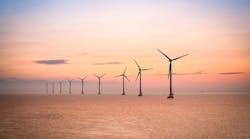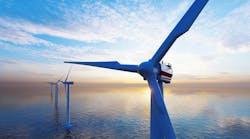Hari Vamadevan, regional director, UK & Ireland, DNV Energy Systems, and Wendy Brown, environment director, IOGP
As the backbone of global energy supply, the transformation of the oil and gas industry is critical to meet global carbon net zero targets.
In 2050, fossil fuels will account for 54% of primary energy supply, compared to around 80% today. Much of this will come from natural gas, as it becomes the world’s largest energy source from the mid-2020s. Production and distribution accounts for only a quarter of the industry’s carbon emissions with the majority occurring during its combustion. While the transition to renewables and efforts to cut carbon intensity will significantly reduce emissions, they will not deeply decarbonize natural gas.
Achieving the Paris Agreement goals is undoubtedly a mammoth task but it’s not a new or unfamiliar mission as environmental and climate awareness becomes part and parcel of the industry’s DNA. A behavioral and cultural shift is already underway to fully galvanize the investment, innovation and stakeholder partnerships that need to be forged. Easy, superficial responses will not work. Industry players, under pressure from society, investor sentiment, and regulation, are responding with ambitious carbon neutrality goals.
The journey to net zero follows three greenhouse gas protocols. Firstly, scope 1 covers direct emissions from a company; scope 2 is indirect emissions from the consumption of energy from suppliers; and scope 3, the most challenging, includes all other indirect emissions that occur in a company’s value chain. The oil and gas industry brings a lot to the table to tackle this, from decades of know-how and engineering experience to project management capabilities.
The topic is one of ten keynote program sessions at SPE Offshore Europe 2021, which will be held in Aberdeen, Scotland, Sept. 7-10, 2021. Global thought leaders from government, industry organizations, as well as operators and supply chain companies will discuss the key elements of their road maps, which will include energy optimization, electrification, flaring and venting reductions, CCS and hydrogen, asset re-purposing and re-use. The sessions are aligned to the overall theme and direction of the event: ‘Oil & Gas: Working Together for a Net Zero Future.’
Collaboration is essential. Deep decarbonization is far too complex, too challenging and involves far too many stakeholders for one company to be able to develop, deploy and deliver the technologies and projects required to halt the consequences of climate change. Collaboration is one of IOGP’s core strengths for over 40 years, bringing industry together on joint projects – the Global Industry Response Group (GIRG) and JIP33 are good examples.
The global pandemic, which has brought huge turmoil and tragedy, has also shown what the world could look like with lower carbon emissions. Clearly, such a seismic shift in the economy and society is neither desirable nor sustainable. Despite the uncertainties resulting from the pandemic and the challenging price scenarios, the industry focus has remained unchanged: meeting the world’s energy demand while helping to achieve a lower carbon future. This has triggered an increased momentum towards an impactful energy transition.
DNV’s latest Industry Outlook survey revealed that the oil and gas sector expects to boost investment in the energy systems of the future over the next 12 months as companies seek to transform for the long-term. A record two-thirds (66%) of respondents stated that their organization is actively adapting to a less carbon-intensive energy mix in 2021, up from just 44% in 2018. Some 57% plan to increase investment in renewables, up from 44% last year, while half (48%) expect to increase investment in green or decarbonized gas.
Low carbon technologies such as carbon capture utilization and storage (CCUS) will play a key role in curbing emissions, but need to be supported politically and through policy measures. The same is true for clean hydrogen. An independent evaluation of geologic CO2 storage assessments worldwide is now available and five CCUS hubs are being developed in the USA, UK, Norway, Netherlands, and China, with three more planned in 2021.
Methane emission reduction is also a major priority for the sector. But what works well for an onshore site in the desert, for example, could be different from the optimal solution for an offshore platform in windy weather. IOGP, OGCI and IPIECA have launched a joint project to develop a common set of recommended practices for methane emissions detection and quantification technologies, applicable to the upstream oil and gas industry.
Environmental, social and governance (ESG) reporting will put more weight on low carbon activities. Likewise, the rising price of carbon will be viewed as a liability on balance sheets and a potential deterrent for future investment and capital allocation in the mid to long-term.
Commitments so far indicate that emissions reductions in the short-term will come largely from efforts to decarbonize oil and gas production. Solutions include electrifying oil and gas assets, reducing flaring and venting of gas during production, increased efforts to detect and stem methane leaks, and efficiency gains through digitalization. However, deep decarbonization of the world’s energy system is still 15 years away, with carbon emissions set to remain stubbornly high until the mid-2030s.
Will it be enough to get to net zero? In order to meet these goals, the industry, government, regulatory bodies and NGOs need a clearer appreciation of the urgency and scale of action needed, the cultural shift required, and the new era of collaboration and co-ordination required.





